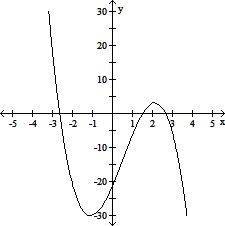Use the compound interest formula to compute the total amount accumulated.$1810 for 4 years at 2% compounded annually
A. $1918.60
B. $1959.20
C. $1920.79
D. $1954.80
Answer: B
Mathematics
You might also like to view...
The abacus in the figure has "five" playing the role of "ten." (a) What number is represented on this five-bead abacus? (b) How would this number naturally be recorded?
A. (a) 625, (b) 10,000 B. (a) 20, (b) 40 C. (a) 125, (b) 1000 D. (a) 25, (b) 100
Mathematics
Solve the equation. -
-  =
= 
A. {13} B. {8} C. {-8} D. {32}
Mathematics
Sketch the graph of the polynomial function. Use the rational zeros theorem when finding the zeros.f(x) = 2x3 - 3x2 - 14x + 21
A. 
B. 
C. 
D. 
Mathematics
Use properties of logarithms to expand the logarithmic expression as much as possible. Where possible, evaluate logarithmic expressions without using a calculator.logw
A. logw7x B. logw9 +logwx + logw2 C. logw9x -logw2 D. logw9 +logwx - logw2
Mathematics